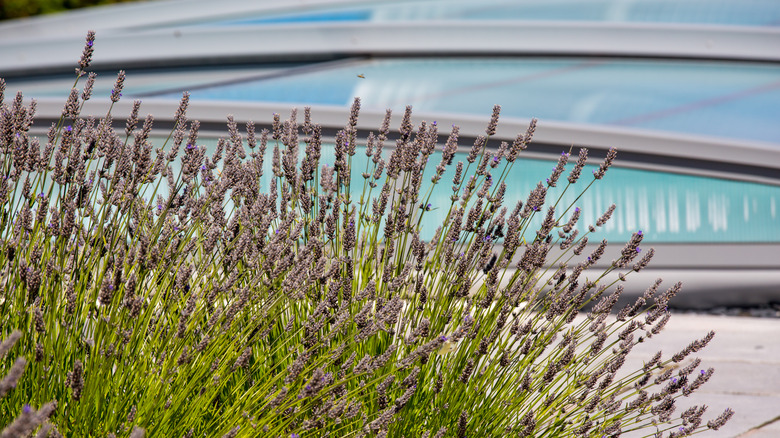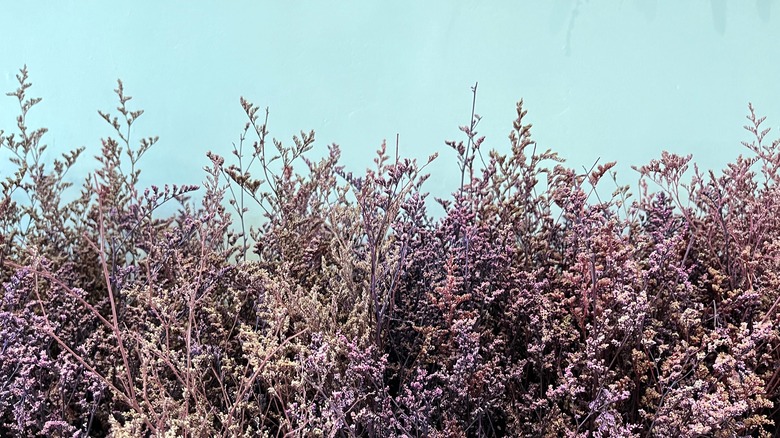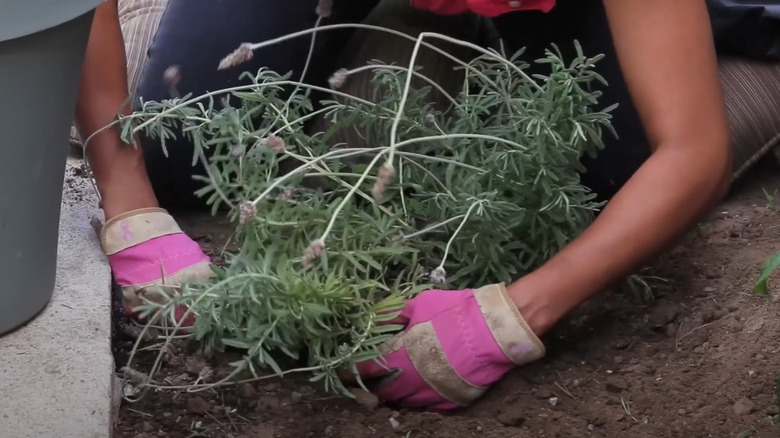Why You Should Get Rid Of Lavender Around Your Pool Area
Imagine a warm summer day, the sun is shining, and you're ready to dive into your sparkling pool. The sweet scent of lavender wafts through the air. Sounds perfect, right? Well, not quite. Lavender may be a plant loved for its beauty and fragrance, but you should think twice about having it around your pool — one major reason: bee attraction.
Bees love lavender, and this raises safety concerns for poolside lounging. Nobody wants to deal with possible stings and the anxiety of constantly keeping bees away from the pool while trying to relax. Moreover, bees are also naturally drawn to water sources, especially in the heat of summer when they need hydration. With lavender nearby to lure them in, your pool can become a hotspot for bees looking to cool off, making it a less inviting place for you and your guests. But the fear of bee stings is just one reason to get rid of lavender by your pool — there's also the hassle of maintaining it.
Lavender's poolside maintenance challenges
Lavender needs specific conditions to thrive, including soil that drains well. It is sensitive to overly moist conditions. Pools tend to splash a lot, making the soil around it too soggy for the plant to thrive. Lavender shrubs too close to a pool can suffer from root rot or fungal diseases if the soil remains consistently damp and the bushes keep getting excess water. Lavender can also grow quite large and woody if not properly pruned. If you're not up for frequent pruning sessions, you might end up with overgrown bushes that not only look unruly but also encroach on your pool space.
Plus, lavender blooms only from June to August, so it looks amazing then, but it can seem a bit sparse and dull the rest of the year. This might leave your pool area looking less-than-stellar for much of the other seasons. Think about swapping out lavender for plants that thrive in poolside conditions and stay beautiful all year with minimal upkeep. Aloe vera and stonecrop are two great options out of many.
Removing lavender from your pool area
If you want to replace lavender with another plant, here's how to first remove it with gardening gloves and a shovel or spade. Use the shovel or spade to carefully dig around each bush, making sure you create a wide enough circle around the main stem to prevent any damage to the roots. Lift the plants out of the ground, trying to get as much of the root system as possible to prevent regrowth. Set aside the removed bushes for easy disposal in your compost bin or yard waste area. You can also transplant the lavender bushes to another area of your yard. Just make sure that it's far away enough from the pool.
Once you've taken out the lavender, prepare the area for future landscaping to prevent weeds from popping up. Use a rake to clean up the soil and get rid of any leftover roots or debris. If you want to suppress weed growth, add mulch to the area, but don't layer it on top of landscape fabric. You may have seen other gardeners do it, but landscape fabric causes more harm than benefit to the soil. Instead, try using a material that degrades quickly, like newspaper, under the mulch or just plainly add more wood mulch to the area. The soil will then be ready for a plant much more suited to poolside conditions.


